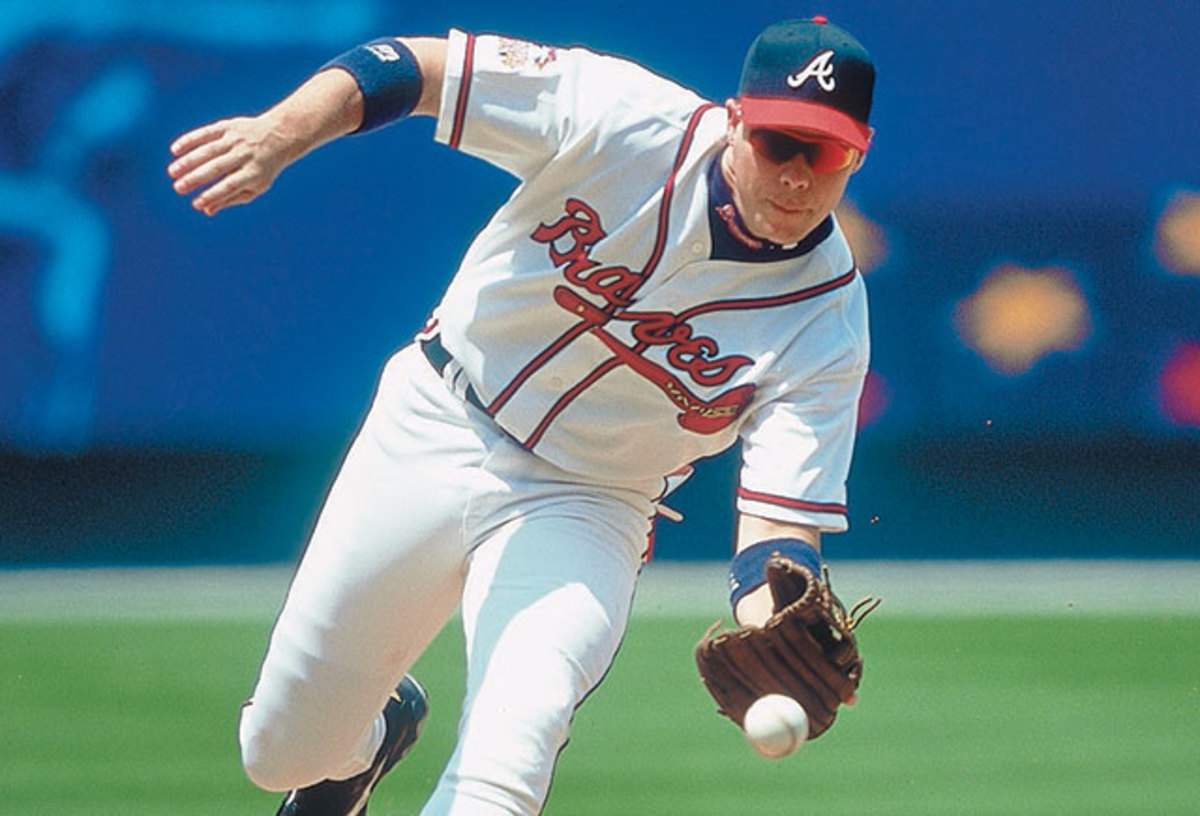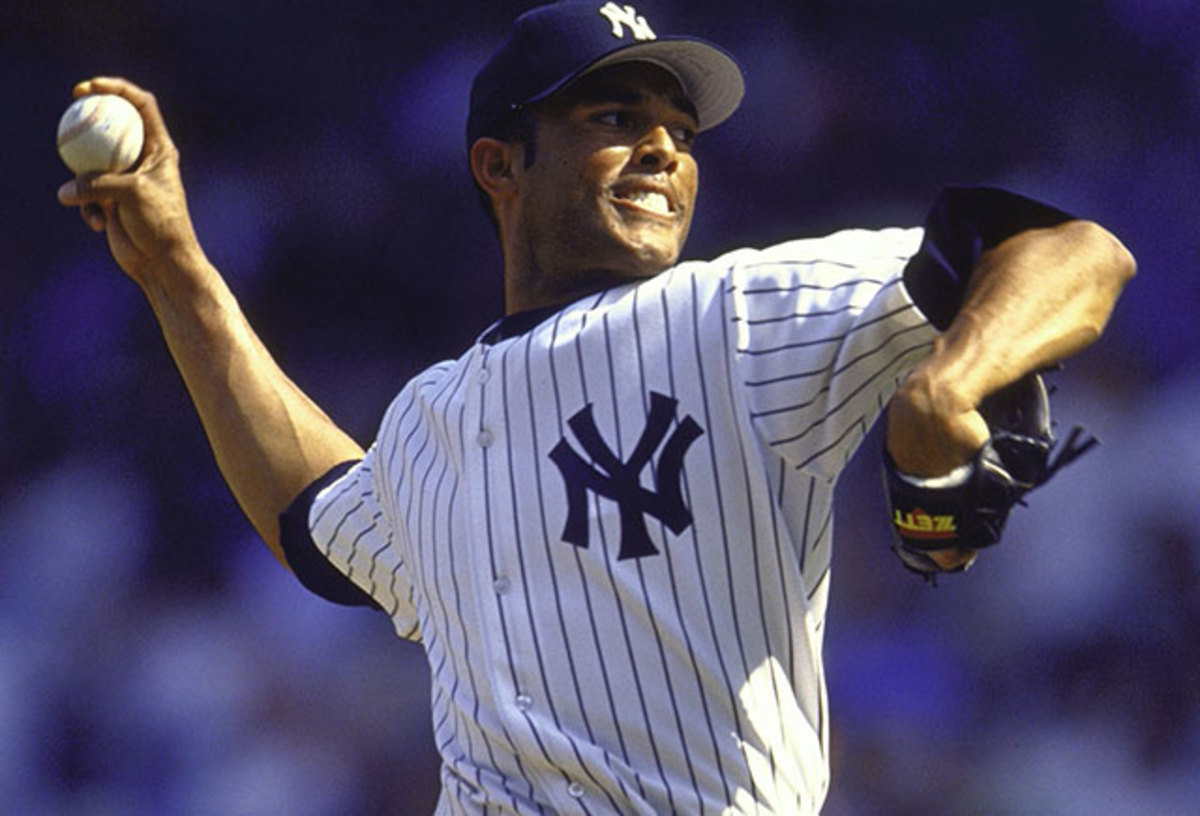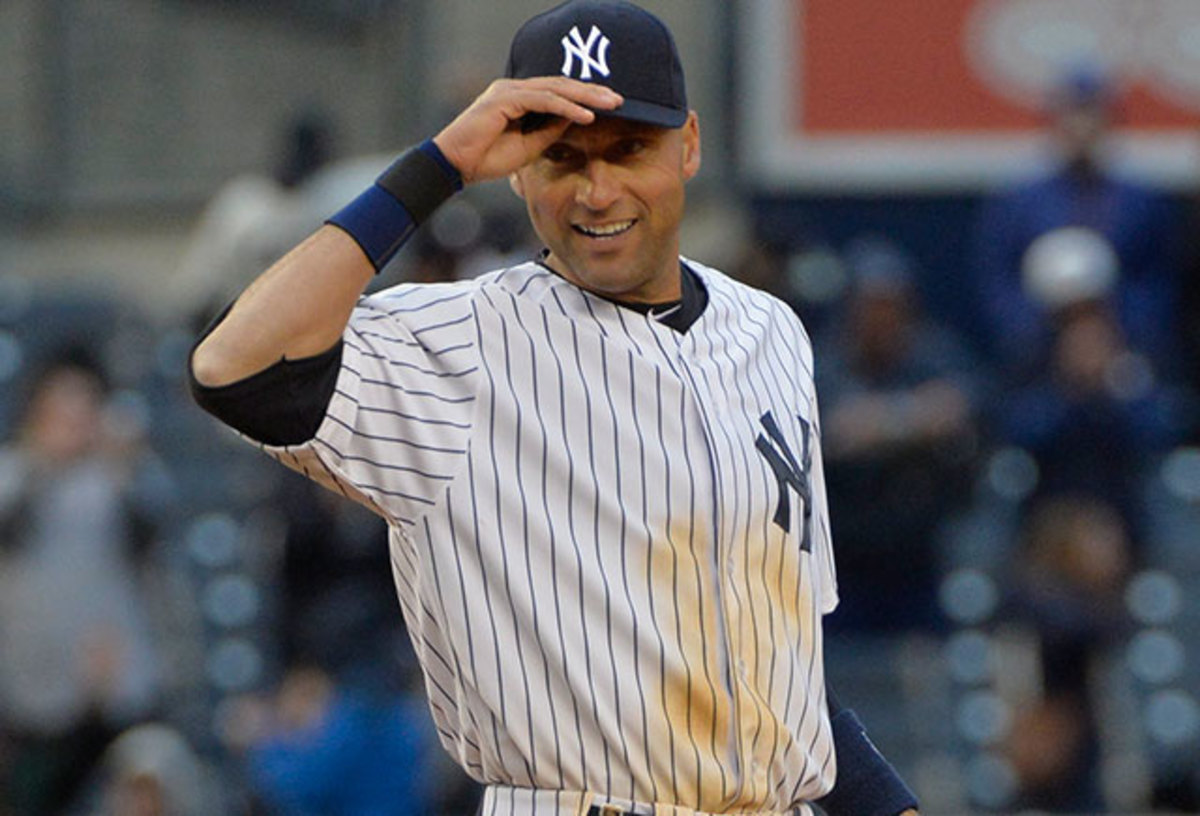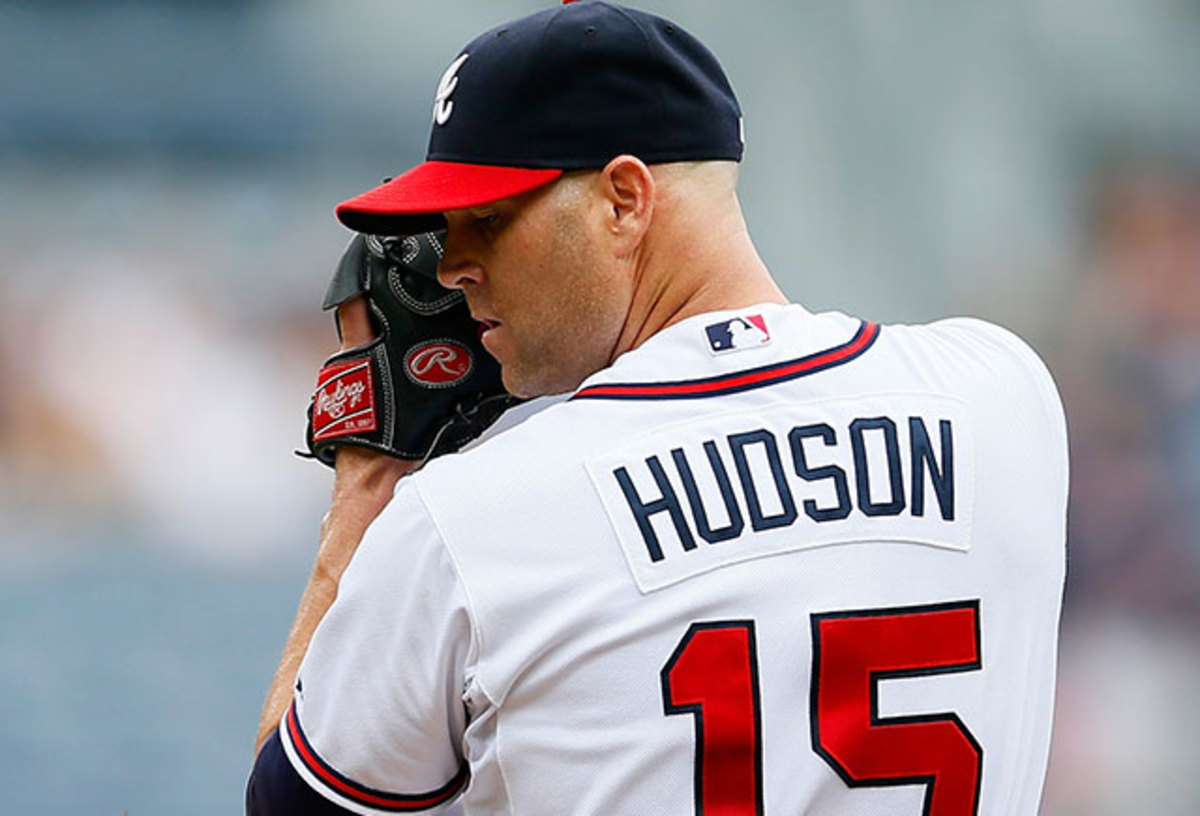Projecting next five years of Hall of Fame voting: Who's in, who's out?

Ken Griffey Jr. and Mike Piazza are headed to Cooperstown this summer, and several other candidates made solid progress toward bronze plaques of their own. But before I turn the page on the 2016 Hall of Fame voting, it's worth another gaze into the crystal ball, revisiting my outlook for the next five election cycles.
Like many a five-year forecast, this an attempt to blend art and science, an exercise that requires some amount of imagination and speculation while remaining grounded in my research into the candidates and the history of the voting process. Underlying it is my own spreadsheet simulation, in which I've apportioned similar shares of the vote across the top candidates from year to year; I also expect candidates to follow certain trajectories, some of them rather well-worn by players who came before them. Since the incorrect assumptions I’ve made in my previousattempts at this—such as John Smoltz taking more than one year to get elected, Trevor Hoffman receiving less-than-robust support in his debut, the Hall of Fame not trimming voter rolls—wind up creating ripple effects, it's back to the drawing board.
For the sake of this exercise, I am assuming that the Hall of Fame will keep the 10 votes per ballot system in place, as well as a 5% minimum to avoid falling off, 10 years of eligibility for new candidates and no clear direction on players connected to performance-enhancing drugs. Note that each ballot's year refers to the year of induction; that ballot is released in November of the previous year, with votes due in late December. To be eligible, a candidate must not have played in the majors for five full seasons, meaning that his eligibility year will actually be six years after his last appearance.
2017
Top newcomers: Vladimir Guerrero, Jorge Posada, Manny Ramirez, Ivan Rodriguez
Top holdovers: Jeff Bagwell, Tim Raines, Trevor Hoffman, Curt Schilling
Most likely to be elected: Bagwell, Raines
Falling off: Lee Smith
Last year, I wrote, "Hoffman is likely in for rougher sledding ... it's tough to foresee an immediate rush to enshrine him, particularly given that ballot spots will remain at a premium." The former all-time saves leader received 67.3% of the vote in his debut, however—around 30 points ahead of where I expected at that point, though the ballots published prior to the announcement of the results made clear I was about to whiff on that particular changeup. Now, the question is whether there's room for all three of the top holdovers—Hoffman, Bagwell (71.6%) and Raines (69.8%)—to surpass 75%.
Player-by-player breakdown of 2016 Hall of Fame ballot results
Before considering the quality of the incoming candidates, note that since the BBWAA returned to annual voting in 1966, only twice has a ballot contained a trio of holdovers who received above 65.0% the year before, in '84 and '87. Dialing back a year to 1983, Harmon Killebrew (71.9% in his third year on the ballot), Luis Aparicio (67.4% in year five) and Hoyt Wilhelm (65.0% in year six) were in the close-but-no-cigar camp; Brooks Robinson and Juan Marichal were elected. Killebrew and Aparicio were elected in 1984, as was 10th-year candidate Don Drysdale, with Wilhelm finishing at 72.0%; he was elected in '85. Meanwhile, the top first-year candidate on the '84 ballot, Wilbur Wood, received just 3.5% of the vote, and nine others fared even worse.
Skip ahead to 1986: Billy Williams (74.1% in year five), Catfish Hunter (68.0% in year two) and Jim Bunning (65.6% in year 10) came up just short, with Willie McCovey getting elected. Williams and Hunter went in the next year amid another dismal first-year class (Bobby Bonds, at 5.8%, was tops), but while Bunning climbed to 70.0%, he failed to reach 75% before falling off the ballot, though he was eventually elected by the Veterans Committee.
Those precedents aren't an exact parallel to 2017, in that none of the holdovers’ candidacies carried the same urgency that Raines’s did heading into its final year. But they do suggest it might be tough to expect the election of all three holdovers in the same year, particularly given the strength of the newcomers, though none is an automatic first-ballot honoree. For as strong as Pudge's career may have been on both traditional merits (2,844 hits, 311 homers, 13 Gold Gloves, an MVP award) and sabermetric ones (third all-time in JAWS among catchers), he was implicated by Jose Canseco as having used HGH and steroids. With no tests failed, no mention in the Mitchell Report and no other concrete proof, he falls into the "cloud of suspicion" territory where Piazza and Bagwell have spent the past few years. I expect that he'll be elected soon, just not on the first ballot.
Hall hopes bleak for Bonds, Clemens; plus, my ballot and more thoughts
On the other hand, Ramirez’s two suspensions for using performance-enhancing drugs will make it easier for voters to discount his video-game hitting stats, which include 555 career home runs. I expect him to wind up in Rafael Palmeiro/Mark McGwire/Sammy Sosa territory, persisting near the bottom of the ballot for a few years but struggling for support. Posada's relatively short career and subpar defense probably doom his chances, particularly with Piazza and Rodriguez on hand for easy comparison—and as the fate of Bernie Williams suggests, a handful of World Series rings won't change the outcome for the longtime Yankees catcher. That leaves Guerrero, whose disappearance from the majors after his age-36 season and subpar JAWS ranking (21st among rightfielders and around 14 wins short on the career front) indicate that he's hardly an automatic entry even with that stellar batting line (.318/.379/.553, 140 OPS+) and Hall of Fame Monitor score (209).
Back to the holdovers. While five of the eight first-year candidates who received between 65.0 and 74.9% in their post-1966 ballot debuts were elected in year two, a closer look at all candidates who landed in the very narrow 67.0–68.9% band shows that just five out of 12 got to 75% the next year, gaining an average of six points. Thus, I'm predicting that Hoffman has to wait a year and that Raines gets the nod in his final year, joining Bagwell. Guerrero and Pudge will debut above 50%, paving the way to their eventual election, and fourth-year candidate Mike Mussina will join them on that tier as well, with Schilling climbing toward 60%. Barry Bonds, Roger Clemens and Edgar Martinez will approach 50% but won't get there this time around. Smith, meanwhile, will receive an uptick in his final year of eligibility, but he'll come up short of the 15.8 percentage-point jump that Alan Trammell made in 2016, as well as his own voting peak (the 50.6% he received in '12).

2018
Top newcomers: Chipper Jones, Scott Rolen, Jim Thome, Omar Vizquel
Other possible newcomers: Johnny Damon, Andruw Jones, Johan Santana
Top holdovers: Hoffman, Schilling, Rodriguez, Guerrero, Mussina
Most likely to be elected: Chipper Jones, Hoffman, Thome
Jones is a lock to waltz into Cooperstown. As the first-ballot election of Smoltz underscored, the voters have a deep respect for the Braves' decade-and-a-half run as a National League powerhouse, and Jones's 2,726 hits, 468 homers, eight All-Star appearances, 1999 MVP award and status as a superstar who spent his entire career with the same team will be more than enough for him to join former teammates Smoltz, Greg Maddux and Tom Glavine and longtime manager Bobby Cox in the Hall. Thome, with 612 career homers and lack of PED connections, may not be universally viewed as an automatic first-ballot honoree because he never won an MVP award, was mediocre in the postseason and had just five All-Star appearances, but his prodigious power and good-guy reputation will carry the day. Having Hoffman—whom I expect to close the deal here—as the only holdover on the precipice of election will help the slugger's cause, so I expect he gets in, making this class a trio.
Three thoughts on Ken Griffey, Mike Piazza and 2016 Hall of Fame election
Rolen, the owner of eight Gold Gloves and the 10th-highest JAWS at third base, will be the sabermetric darling whose support among the broader electorate will rate as a disappointment—the hot corner equivalent of Larry Walker, albeit without the MVP award and batting titles. The separation between him and contemporary Adrian Beltre, who by this point should have banked his 3,000th hit (he's 233 away through the end of the 2015 season) where Rolen has just 2,077 won't help; I see Rolen's candidacy hanging on but hardly thriving. I expect even less for Damon, despite 2,769 career hits and two World Series rings, as his combination of the No. 21 ranking in JAWS among centerfielders (12.6 points below the standard), just two All-Star appearances and no other major hardware dooms him to a short stay on the ballot. If Kenny Lofton and Jim Edmonds could go one-and-done, so could Damon.
Vizquel is the fielding whiz who will have the mainstream attention on the basis of his 11 Gold Gloves and the all-time record for games played at shortstop (2,709). But while he was 128 runs above average for his career in the field (via Total Zone and Defensive Runs Saved, which combine to form the defensive component of baseball-reference.com’s version of WAR), he didn't do enough with the bat to enhance his case, hitting .272/.336/.352 for an 82 OPS+ and ending up 244 runs below the average hitter for his career. Ozzie Smith, the shortstop to whom Vizquel is often compared, was no great shakes with the bat (.262/.337/.328), but he put up those numbers during a much lower-scoring era, and so his combination of defense (+239 runs) and offense (-117 runs) was far more valuable. Smith's 76.5 career WAR ranks sixth, his 59.4 JAWS is eighth; Vizquel's 45.3 WAR is 29th, his 36.0 JAWS is 41st. He’ll get some support, but I don't see him reaching 75%.
Elsewhere, I expect Schilling and Rodriguez to climb into the 65–70% zone, Guerrero and Mussina to move into the 60% range, and Bonds, Clemens and Martinez to finish around 50%. While I'd actually expect slightly quicker growth of the support of that last trio relative to where they finished in 2016—particularly as Edgar's time runs out (he'll be in year nine here)—electoral history shows that having even seven candidates above 50% is a rarity. It's only happened three times in the modern era: 1983, 2014 and '15.
Note that I've listed Andruw Jones and Johan Santana here. Neither has played in the majors since 2012, though Jones played in Japan as recently as last year and was reportedly planning a comeback in August. Even without the benefit of a good season as a full-time player past the age of 30, he ranks 10th in JAWS among centerfielders to go with 434 homers, 10 Gold Gloves and the best defensive rating of all time at his position. Sooner or later, voters will be forced to reckon with his amazing first decade, though whether the Braves' Cooperstown halo extends to him remains to be seen; for what it's worth, he and Chipper Jones are nearly equal in WAR for the 1996–2005 span during which they were teammates, and that’s with Andruw playing just 31 games as a 19-year-old in the first of those seasons.
As for Santana (a two-time AL Cy Young winner): He's tried comebacks with the Orioles and Blue Jays in the past two years, both of which have been thwarted by injuries. As of November, he still planned to give it one more shot, and while the odds are long, even a token appearance would reset his Hall of Fame eligibility clock. He's basically a Nomar Garciaparra-like candidate, with a near-Hall of Fame peak but too short a career to gain traction.

2019
Top newcomers: Roy Halladay, Todd Helton, Andy Pettitte, Mariano Rivera
Top holdovers: Schilling, Rodriguez, Guerrero, Mussina, Martinez
Most likely to be elected: Rivera, Schilling, Rodriguez
Falling off: Fred McGriff, Martinez, Ramirez
While Hoffman will take multiple ballots to gain enshrinement, Rivera will have no trouble getting into the Hall of Fame on his first try. Take your pick as to which will impress voters more: his all-time saves record, his incredible postseason performance (0.70 ERA in 141 innings) while helping the Yankees win five world championships, his substantial edge on every other reliever besides Dennis Eckersley in WAR and JAWS, or his status as a beloved ambassador of the game. Expect him to receive well over 90% of the vote, perhaps even upwards of 95%.
Halladay, a two-time Cy Young winner with a 131 ERA+, tops the average enshrined starter's seven-year peak but is a bit short on the career and JAWS fronts, ranking 42nd overall. Because he wasn't a strikeout pitcher the way that Mussina, Smoltz and Schilling were, he didn't accrue value as quickly, as more credit had to be granted to his fielders. Halladay had just 203 wins and 2,117 strikeouts and never pitched in a World Series, so—despite having only the second no-hitter in postseason history—he'll get dinged by traditionalists as well. I'd expect a debut in the 40–50% range, enough to set him on an eventual path to election.
I don't expect the same results for Pettitte, despite his 256 wins and five rings. He not an elite run preventer (117 ERA+), he's just 88th in JAWS, and his appearance in the Mitchell Report isn't going away. Helton will have his adherents, but his mid-career falloff and the voters' resistance to Coors Field-inflated stats means that his trajectory won't take him toward Cooperstown; he can ask Walker, who will be languishing down-ballot in his ninth year, about that.
By this point, I expect seventh-year candidate Schilling and third-year candidate Rodriguez to get over the top, with Guerrero in the high-60s, Mussina in the mid-60s and Bonds and Clemens somewhere in the 50s. This will be the 10th and final year on the ballot for both Martinez and Fred McGriff, but assuming they fall off, they'll have to wait until 2023 for their cases to be taken up by the Expansion Era Committee just a year later. I suspect that Ramirez will follow Palmeiro's three-and-out trajectory—if he even lasts that long.

2020
Top newcomers: Bobby Abreu, Adam Dunn, Derek Jeter, Paul Konerko
Top holdovers: Guerrero, Mussina, Halladay
Most likely to be elected: Jeter, Guerrero
Falling off: Walker
With his 3,465 hits (sixth all-time), 14 All-Star appearances and five championship rings, Jeter isn't just a lock for Cooperstown, he is another candidate who will likely crack the top 10 in shares of the vote—that's upwards of 97.2%, at this writing—even with his defensive shortcomings. He's likely alone among the first-ballot set on this ballot, however. Konerko, despite his 439 career homers, .279/.354/.486 (118 OPS+) lifetime batting line and upstanding reputation, isn't going to be any longer for the ballot than was Carlos Delgado (473 homers, a .280/.383/.546 line and a 138 OPS+ but just 3.8% of the vote in 2015). Likewise for Adam Dunn and his 462 bombs, particularly given the way his career slid into replacement-level territory as Konerko's teammate on the South Side. Abreu, despite a stellar .291/.395/.475 (128 OPS+) batting line and a career/peak/JAWS that's a whisker above Guerrero across the board, isn't going to have nearly the impact on the ballot.
Guerrero should climb to 75% by this point, and Mussina could have an opening here, but it's more likely he'll have to wait until 2021. Halladay should be past 50% and the Bonds/Clemens tandem (each in their eighth year) approaching 60%. Perhaps by this point, Gary Sheffield (in his sixth year) and Jeff Kent (seventh year) will be gaining traction, or maybe a more recent candidate such as Rolen, Vizquel or Helton will pick up steam. At this point, I'm throwing darts.

2021
Top newcomers: Tim Hudson, Torii Hunter, Aramis Ramirez, Mark Buehrle*
Top holdovers: Mussina, Halladay, Bonds, Clemens
Most likely to be elected: Mussina
Falling off: Walker
The first year that I'll have a ballot isn't exactly offering a bumper crop of viable new candidates. In fact, unless Ichiro Suzuki suddenly decides to hang up his spikes, this is shaping up to be the weakest first-year class since 2012, when Bernie Williams was the only newcomer to break 5.0%.
Hudson won 222 games and finished with a 120 ERA+, but he ranks just 79th in JAWS, far below every other starter up for discussion in this exercise except Pettitte. Buehrle (who has yet to officially announce his retirement) has 214 wins and a 116 ERA+ and ranks 89th, one notch below Pettitte. Hunter has 2,452 hits, 353 homers and nine Gold Gloves, but he's 31st among centerfielders in JAWS, nowhere near as good as the Lofton/Jones/Edmonds cluster that so far has been ill-served by voters. Ramirez had some thump (386 homers and a .492 slugging percentage) but is 85 runs below average via the defensive metrics, leaving him just 58th in JAWS among third basemen.
JAWS and the 2016 Hall of Fame ballot: Mike Mussina
This will be a year for holdovers to step forward. If Mussina hasn't been elected by this point, it'll be his year, and if attitudes continue to soften, Bonds and Clemens, who will be in their ninth years, could be approaching election. For those who think that's outrageous—that the 2016 returns dictate that they'll be left outside the gates forever, given that they didn't gain as much ground as anticipated—consider that they still have six election cycles (through 2022) to add roughly 30 percentage points (31 in Bonds's case). Assuming 440 ballots, Bonds needs to add 135 votes, or an average of 27 per year from among new voters (who are probably more likely to vote for him than the inactive ones who will lose their ballots) and returning voters who change their minds. That doesn't seem impossible, particularly as the traffic that has made the 2013–16 elections—and probably the next couple after that—so complicated will start to abate. A vote for Bonds or Clemens won’t carry as high a cost in terms of depriving another obvious candidate of a vote.
Summary
In all, that's an estimate of 11 players elected over the next five years. I counted nine last time around, a tally that didn't include Raines (whom I predicted would age off the ballot), Hoffman (whom I didn't expect to make such a strong debut, clearing a path to election), Guerrero or Mussina (whom I thought would get elected outside the window in question). This may be overly optimistic; it’s possible Rodriguez could slip another year, with a four-year candidacy that would equal Piazza's. That in turn could bump Guerrero and Mussina back a year.
Even if “only” 10 candidates are elected in this span, that would match the highest five-year output by the BBWAA since it returned to annual voting; they voted in five from 1982 to '86, '99 to 2003 and now '12 to '16, even with the '13 shutout. A 2014 to '18 crop of 14 (based on what I've outlined above) would probably doom any further attempt on the writers’ behalf to expand the ballot beyond 10 slots and would bring complaints of diluted standards from those who haven't done the research, and yet otherwise strong candidates such as Larry Walker and Edgar Martinez will continue to fall off ballots, giving way to frustration over newer candidates’ lagging support. The names will change, but the battles over ballot space will continue.
